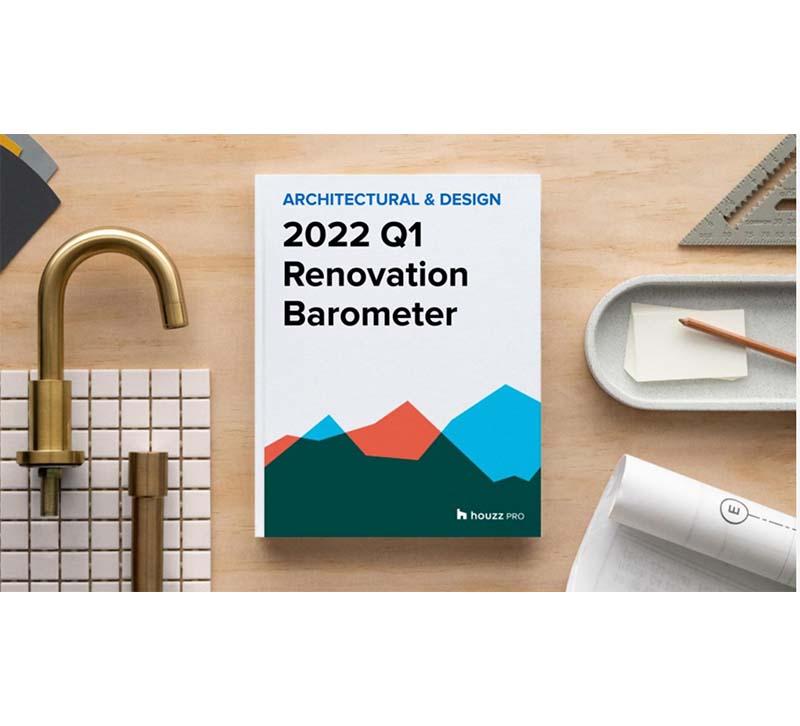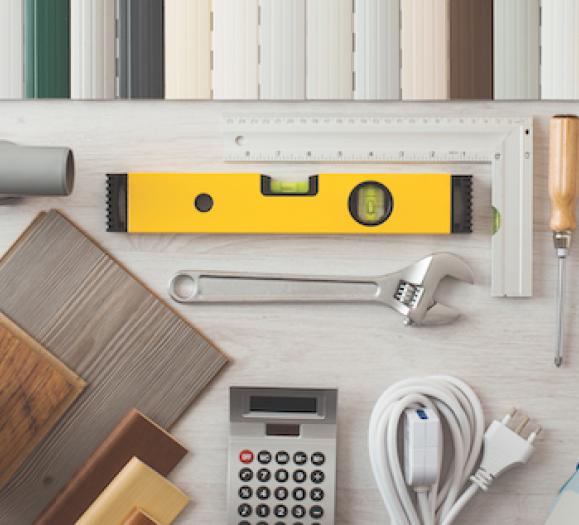Houzz Inc.has released the Q1 2022 Houzz Renovation Barometer, which found that the confidence level among construction professionals is at its highest point since 2018. Confidence among architecture and design firms is up one point from Q1 2021. Recent business activity remains high, despite a slight settling from its peak in early 2021. Anticipated project inquiries are among the highest recorded for the construction sector in the history of the Barometer“Confidence among businesses in the residential construction and design industry has remained high since the initial shock of the pandemic and continues into 2022,” said Marine Sargsyan, Houzz Senior Economist. “Businesses are facing product and material shortages and price volatility, lack of labor availability, and fluctuations in interest rates, which may be impacting the Recent Business Activity Indicator. That said, even with long wait times, businesses report no respite from pent-up demand, confirming longstanding market fundamentals.”
Q1 2022 Construction Sector Barometer
In the construction industry, build-only and design-build professionals are aligned on anticipated business performance although sentiments diverge on recent business activity for Q4 2021. While build-only remodelers report slower activity compared to Q3, design-build firms experienced a slight increase in Q4 2021 activity compared with the previous quarter.
The Expected Business Activity Indicator related to project inquiries and new committed projects increased to 79 in Q1 (compared to 74 in Q4 2021). Expectations for project inquiries increased significantly to 80 compared to 73 in Q4 2021, and new committed projects rose to 78 (up four points relative to Q4 2021).
The Project Backlog Indicator reached 11.4 weeks in Q1, which is more than a month longer compared to the same period a year ago (7.4 weeks).
The Recent Business Activity Indicator related to project inquiries and new committed projects dropped significantly to 65 in Q4 (compared to 73 in Q3). This is driven by a decline in project inquiries, which decreased to 66 in Q4 (down five points relative to Q3), and by a significant decline in new committed projects to 64 (down nine points relative to Q3). After reaching its record high activity in Q2 2021, recent business activity has been steadily converging to its pre-pandemic levels (65 in Q4 2019).
Q1 2022 Architectural and Design Services Sector Barometer
Business performance expectations diverge somewhat among the architectural and design services subsectors. Interior designers expressed optimism for business in Q1, reporting higher expectations than last quarter for project inquiries and new committed projects. Architects have tempered their outlook, anticipating decreases in project inquiries and new committed projects. Both groups report slower business activity in Q4 2021 compared to the previous quarter.
The Expected Business Activity Indicator related to project inquiries and new committed projects remained the same in Q1 at 69. Expectations increased slightly for project inquiries to 71 in Q1 (up one point), and declined for new committed projects to 67 in Q1 (compared to 68 in Q4 2021).
The Project Backlog Indicator reached 7.9 weeks in the beginning of Q1, which is two weeks longer than a year ago (5.6 weeks).
The Recent Business Activity Indicator related to project inquiries and new committed projects declined to 65 in Q4 2021 (compared to 70 in Q3). This decline is a result of a significant drop in project inquiries to 67 (compared to 74 in Q3) and a decrease in new committed projects to 62 in Q4 (down four points).
Regional Backlogs
Backlogs continue to grow across the industry, lengthening the time before pros can begin work on a new, mid-sized project. Wait times are the longest when comparing the start of any year since 2018. Backlogs vary significantly by geography, but are longer in Q1 2022 than they were in Q1 2021 across all nine Census divisions in the U.S.
For the construction sector, New England has the longest backlog (13.3 weeks) driven primarily by design-build firms in the region (18.1 weeks), while build-only remodelers report 8.6 week wait times. Businesses in the West South Central division (which includes Texas, Oklahoma, Arkansas and Louisiana) report 8.1 weeks of backlogs before they can begin a new project, the shortest wait time reported by construction firms among the nine Census divisions.
Backlogs also vary across all regional divisions among businesses in the architecture and design services sector. Businesses in the East North Central division (including Wisconsin, Michigan, Illinois, Indiana and Ohio) reported 10 week backlogs, while the East South Central division (including Kentucky, Tennessee, Alabama and Mississippi) showed much shorter backlogs at 4.7 weeks. Backlogs reported by architects (12.4 weeks) in the East North Central division are the driving force for long wait times, whereas wait times to begin a new project with an interior designer in that area is only 6.1 weeks. Compared to the same quarter one year ago, backlogs are longer across all nine Census divisions.
The Houzz Renovation Barometer tracks residential renovation market expectations, project backlogs and recent activity among U.S. businesses in the construction sector and the architectural and design services sector.







